How to Make Leaf Mould from Autumn Leaves
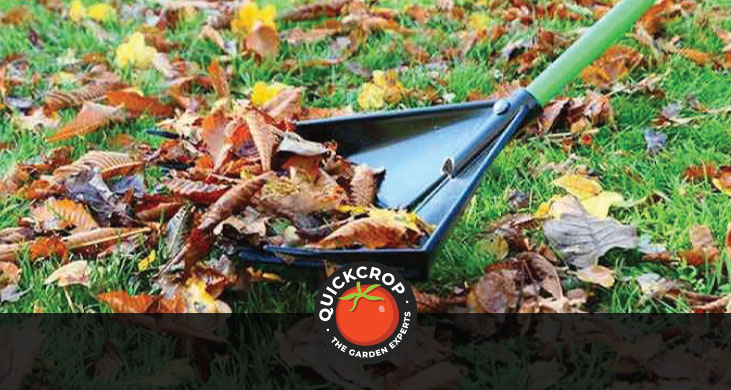
Collecting autumn leaves may seem like another garden tidying task to add to the list, but they are actually a valuable resource for the vegetable gardener. When rotted they make an excellent mulch, soil improver or compost mix.
What is Leaf Mould?
Leaf mould (often spelled as one word) is the dark, crumbly material left when leaves rot down. Leaves take a long time to decompose, because they are high in carbon and low in nitrogen. Good quality, crumbly leaf mould will take about 2 years to make, and by this stage it can bear very little resemblance to leaves at all.
Digging raw leaves into the garden is not a good idea, as the nitrogen needed to break them down will compete with the nitrogen needs of your crops.
How to Make Leaf Mould
Making leaf mould is easy and you need only 3 ingredients: leaves, moisture and time. You are basically mimicking the process that takes place in forest floors, where leaves fall to the ground and gradually rot down with the assistance of fungi.
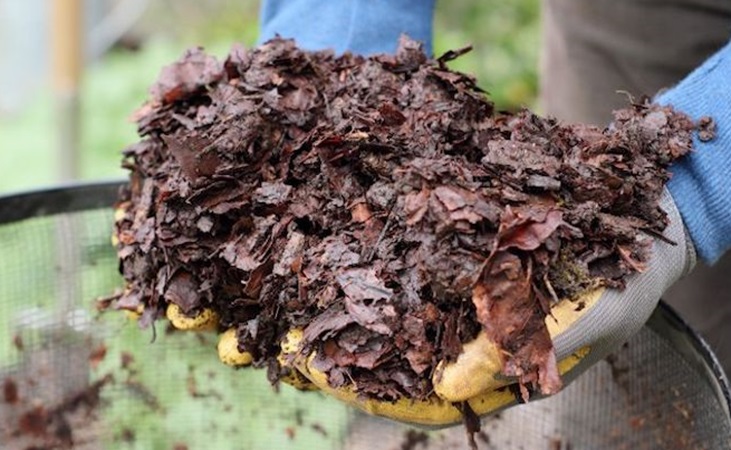
As a natural resource that is in plentiful supply depending on the time of year, leaf mould has the added advantage of being completely free.
What Can I use Leaf Mould for?
Soil Improver
Leaf mould is an excellent soil improver, and it can be added to your garden soil to make it easier for plant roots to penetrate. Soil that has had good quantities of leaf mould added is 20% less dense than soil without, which makes it easier for plant roots to penetrate and take up nutrients.
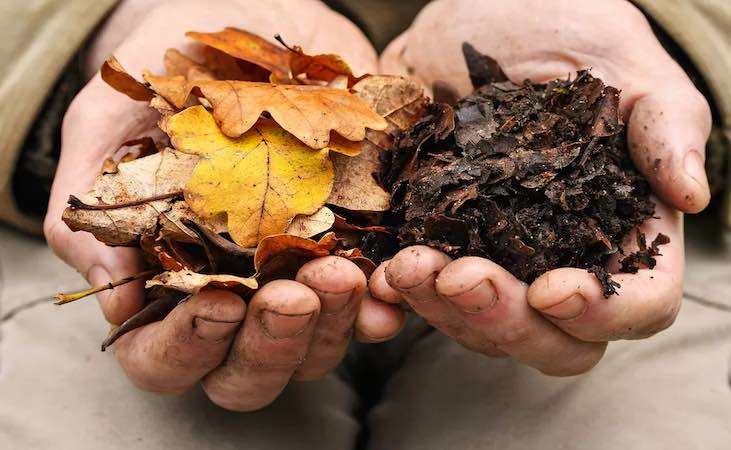
Well-rotted leaf mould also stimulates microbial activity in the soil, which in turn releases nitrogen and other nutrients to the roots of your plants. Leaf mould can also hold up to 500 times its own weight in water, so it is excellent for improving the moisture retaining qualities of your soil.
We recommend adding leaf mould as a mulch to your beds rather than digging it in: let the worms do the work of mixing it in for you, and keep the structure of your soil intact.

Handy Hands - Leaf Collecting Hands
View Product
Seedling compost mix
When it has broken down completely to a compost-like consistency, leaf mould can be used in place of peat as a seed or potting mix.
Seed sowing mix: Use leaf mould on its own, or mixed with equal parts sharp sand and garden compost.
Potting compost: Mix equal parts well-rotted leaf mould, sharp sand, loam and garden compost.
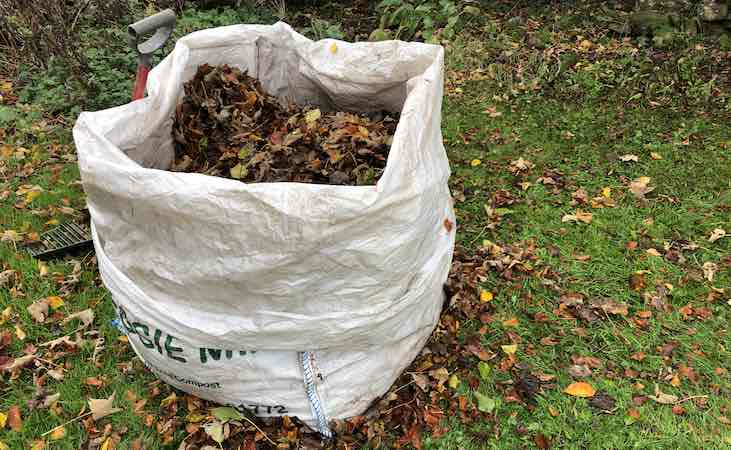
Brown or carbon ingredient for home compost
A stock of decomposing leaves are handy to have around to add as the brown or carbon part of your compost. Leaves are high in carbon, but will have lost most of their nitrogen when you collect them - so they will slow down the composting process if you add too many.
Instead, collect leaves in Autumn for adding to your compost the following year, when brown material can be hard to come by. Open weave hessian leaf collecting sacks are ideal, as the air circulation allows the leaves to break down - they also look far prettier than a load of black bags!
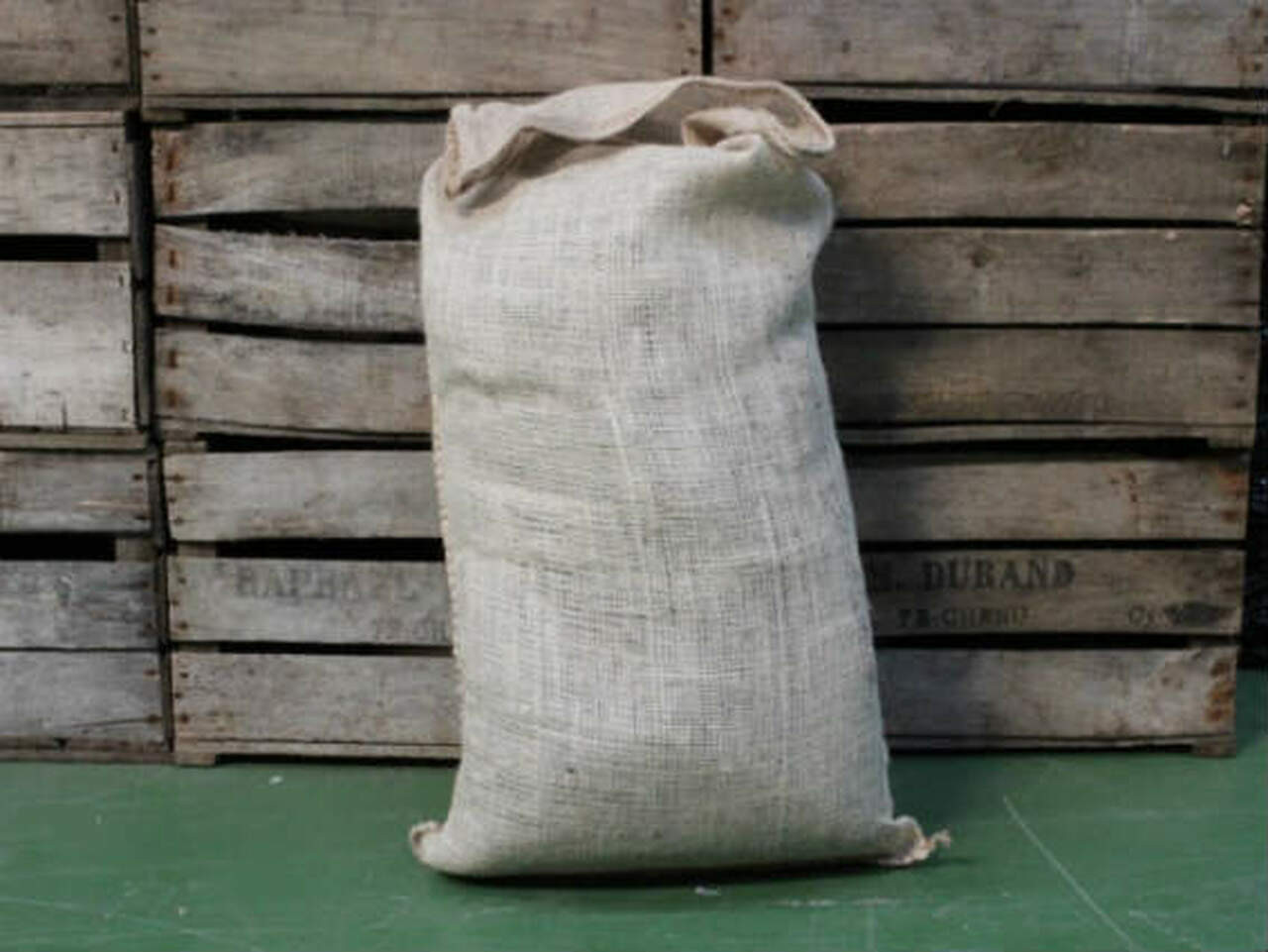
Hessian Potato Sacks
View Product
Can I add leaves to the compost heap?
You can add leaves to the compost heap, but as above you need to get your carbon-nitrogen ratio right, or they will take too long to break down.
A handy method at this time of year is to run a rotary mower over any leaves on your lawn and empty the contents into the compost bin. The leaves will be chopped which makes them break down quicker, but they will also be mixed with grass clippings - which will give you a good carbon (leaves) and nitrogen (grass) mix.
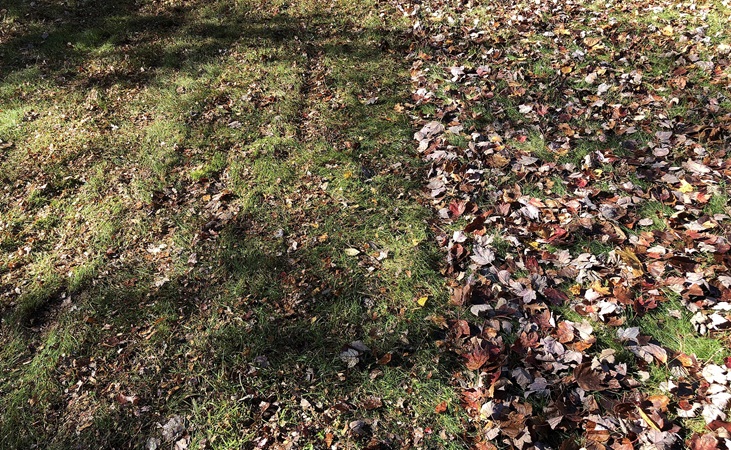
Ideally your mix should be 80% leaves and 20% grass, which given the slow lawn growth at this time of year should be about right.
How do I make leaf mould?
The best way of composting leaves and making leaf mould is to either make a mesh basket or store them in black plastic sacks. Personally I don't like having the black plastic bags hanging around the place, so prefer the mesh method - although I do find the leaves break down quicker in the bags.
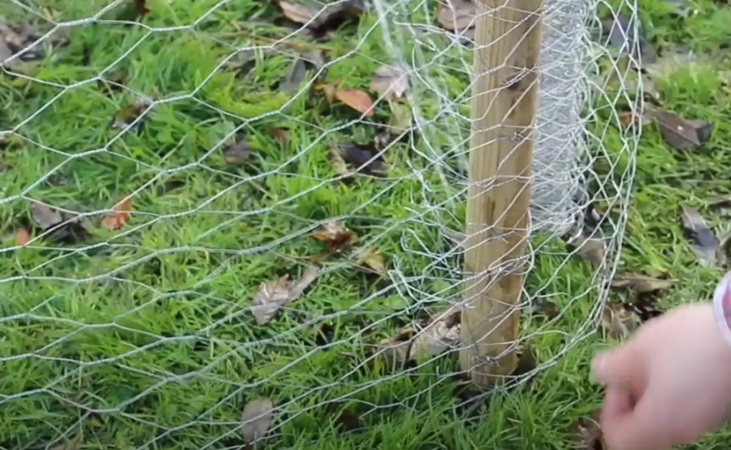
Making a leaf mould cage
You can watch Niall (with help from his dogs) making a leaf mould cage in the video at the top of the page. Making a cage is very simple to do: you just drive four stakes into the ground and staple chicken netting around this rudimentary frame.
A 3 foot square bin is minimum, but if you have the room a larger bin will be more useful, as leaves are bulky and take up a lot of space.

Kent and Stowe Long Handled Leaf Rake
View ProductPile in the leaves and leave them alone for a year. You will find the pile reduces by two thirds at least, so keep filling the bin as more leaves fall. If you have one of those marvellous garden vacuum mulchers that suck up leaves and chop them, you will find the leaves will rot down much more quickly.
The design of the mesh bin means that worms can work their way up through the pile as it rots, which also helps the process.

Galvanised Wire Netting - 10m x 0.9m (50mm mesh)
View Product
To build a leaf mesh bin you will need:
4 x Wooden tree stakes.
1 x PVC Coated Wire Mesh or Chicken Wire Netting
U shaped wire nails.
Using Plastic bags
For this alternate method, you simply fill black plastic bags with moist leaves. Tie up the tops, and then poke a few holes in the side with your garden fork to allow the air to circulate. Check the bags every now and then, give them a shake up and add a little water if dry.
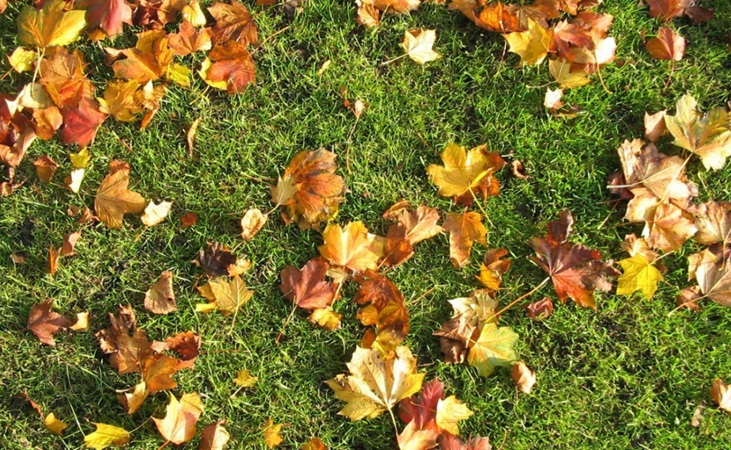
'Young Leaf Mould' and Newly Fallen Leaves
You don't have to wait for leaves to rot down to make use of them. They can be used as a cover for bare soil in winter: this reduces the loss of moisture and nutrients from the soil, as well helping to prevent soil erosion. However, they may need to be removed again come spring to make way for sowing and planting.
You can also use leaves as a mulch for informal paths in the garden. A layer of leaf cover can act as a weed protection mulch.

Burgon & Ball Lawn and Leaf Rake
View Product'Young leaf mould' generally refers to leaves that can be 1-2 years old, depending on the tree species in question. By this point they will have begun to break up and will easily crumble in your hand.
Young leaf mould can be used to mulch around shrubs, herbaceous plants, trees and certain vegetables. Natural mulches help the soil around the roots to retain moisture.

Jute Leaf Bags (pack of 3)
View Product
Lawn Top Dressing
Using young leaf mould as a top dressing for your lawn can enhance aeration and drainage, as well as adding beneficial organic matter. This is best done in early to mid autumn, which gives the leaf mould time to break down further.
If the soil in your lawn is heavily compacted, it can be a good idea to aerate (with a fork or aerating tool) before applying the lead mould.
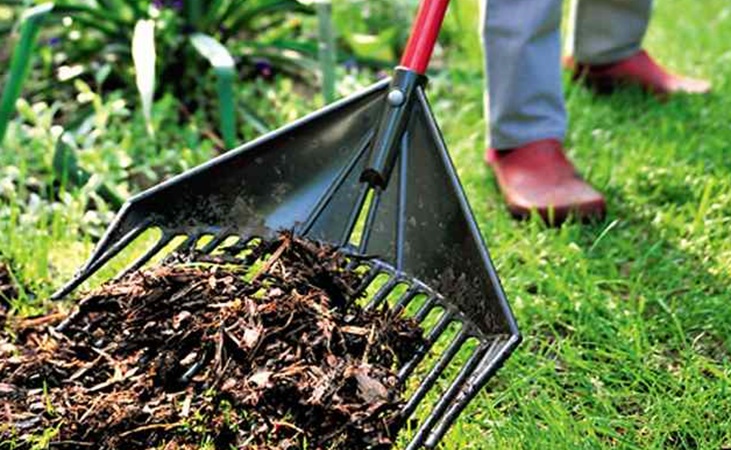
What is the Best Way of Collecting Autumn Leaves?
One of the best tools we've come across recently is fantastic for clearing Autumn leaves. Our 'Golden Gark' (also the weirdest name for a tool we've come across) has been used all summer to rake and sieve stones and weeds in the vegetable garden, but now it gets pressed into service in leaf sweeping duties.
Using a set of Leaf Collecting Hands or 'Grabbers' is another popular method; you can pretend that you're some kind of giant lizard while you're at it.

Golden Gark Multipurpose Garden Tool
View Product
Keep Wildlife in Mind when Collecting Leaves.
Don't disturb drifts of autumn leaves under hedges and in other sheltered or out-of-the-way areas. They may be used as hibernating sites by hedgehogs and other creatures.




